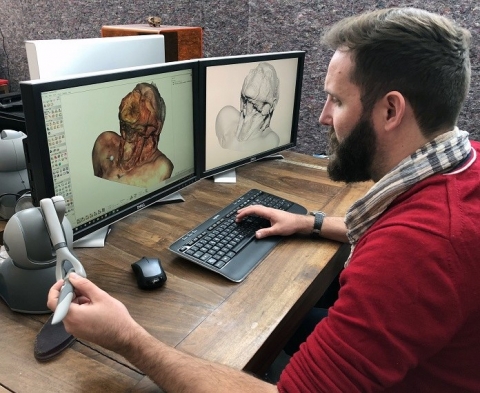Futuristic VR medical training technologies of tomorrow to change the way the medicine is taught
3D and VR technologies alike are growing ever more popular throughout industries all over the world and are becoming especially common in the healthcare field due to their precision, ease of use and versatility. One of Artec’s long-standing clients, IMA solutions, has been involved in a very exciting project that features a combination of the latest in 3D scanning and VR developments and looks to significantly alter the way medicine is practiced and taught.
It all began with two surgeons from the Montpellier Medical University city anatomy laboratory, M.D, Ph.D. Guillaume Captier and M.D Mohamed Akkari, who were seeking to resolve certain difficulties in teaching medical students at the university. The lessons required the use of real cadavers, and while this was an effective way of learning about the human anatomy, issues with availability and costs of the cadavers would often arise. Performing dissections on bodies of the deceased is quite costly and inexperienced medical students do not always perform a proper dissection on the first try, often damaging or even destroying multiple cadavers at a time.
After careful consideration of the options available, a decision was made to design a highly accurate, real-time 3D dissection application, which will allow students to practice procedures and reach an acceptable standard prior to dissecting real cadavers and will also enable teachers to adopt a completely new and effective way of teaching. This versatile and unique application will also be able to run in an examination mode in order to check the level of students’ knowledge, allowing them to hone their medical skills, without having to use real cadavers.
To ensure that the application data was as realistic and accurate as possible, all of the dissection steps on actual corpses had to be 3D scanned and transferred to the training application. The experts at the IMA Solutions undertook this vital task. Using the highly-precise Space Spider 3D scanner, they captured all of the dissection stages to provide 3D photorealistic models to feed the application.




